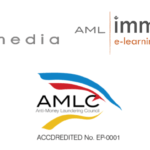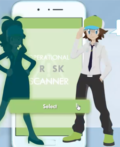Short Learning, Long Recall
Posted on May 21, 2018


In this Forbes article, the author asked, “What makes a TV commercial memorable?” Of the different responses provided, one answer stood out: “If you don’t remember the product or service, the ad is a failure. The ad should address a need, demonstrate how the product or service meets the need, and do it in a compelling, memorable way, with a device known as a hook. 25 years after it ran, people still remember Wendy’s “Where’s the beef?” ad. It is a great example of saying, “Wendy’s burgers are so big, they stick out from the bun. The other guys’ burgers are so small, you have to look for the patty!” The purpose of commercials is to make it so engaging that the viewer will be sold on the product. This is also true for elearning; elearning’s purpose is to “sell” to the learner the subject at hand. This is a challenge for many elearning developers, who sometimes fall to the safest approach to course development: the “Click next to learn more.” style (a standard in page-turning courses). It is with this premise that the advertising representatives from Saatchi and Saatchi and Adobo Magazine shared how they compress the information that they wanted to convey in the shortest amount of time. Each representative shared their best practices in planning a commercial during the second day of the GOAL (Global Online Association for Learning) Learning Summit 2016 last February. Saatchi and Saatchi shared the following tips to create attention-grabbing output: 1. Balance fun/inspiration with information 2. Make the product relevant for your audience One of the example ads Saatchi shared was the Mountain Dew Kickstart commercial that was featured during the 2016 Superbowl. The #PuppyMonkeyBaby concept of the ad was that the energy drink Kickstart is as awesome as a fusion of a puppy, monkey and baby, which are the three attention-grabbing characters often used in advertisements. Personally, I found the puppy-monkey-baby commercial very strange, but a lot of people seem to like it. Another example was the Skittles ad with Aerosmith frontman Steve Tyler, where he started a singing contest with a portrait of himself created in Skittles; the ad’s message showed that Skittles is “creative, fun, and delicious”. As an Aerosmith fan, this commercial became an instant favorite of mine (and I like Skittles—go figure). Adobo Magazine shared two versions of the general advertisement-creation rules. The first version is very broad:Short Simple Less cuts Then, Adobo updated the three rules in order to create meaningful advertisement & information sharing:Say one thing The beginning is as important as the end Speak from the heart An example they shared is the True Colors Oishi ad, where the character in the ad start showing their “true colors” after eating the spicy crackers. The song “True Colors” by Cyndi Lauper complemented the ad’s message: When things get hot, the truth comes out. What can we learn from these examples? This session showed best practices, and what they had in common is that information doesn’t have to be chunked into several modules or released into a one-hour package. Information can be presented in short, attention-grabbing bursts that, when packaged well, will have a lasting impression on the viewer. In this modern world, it’s time to rethink things and start grabbing attention through short and simple packages!













